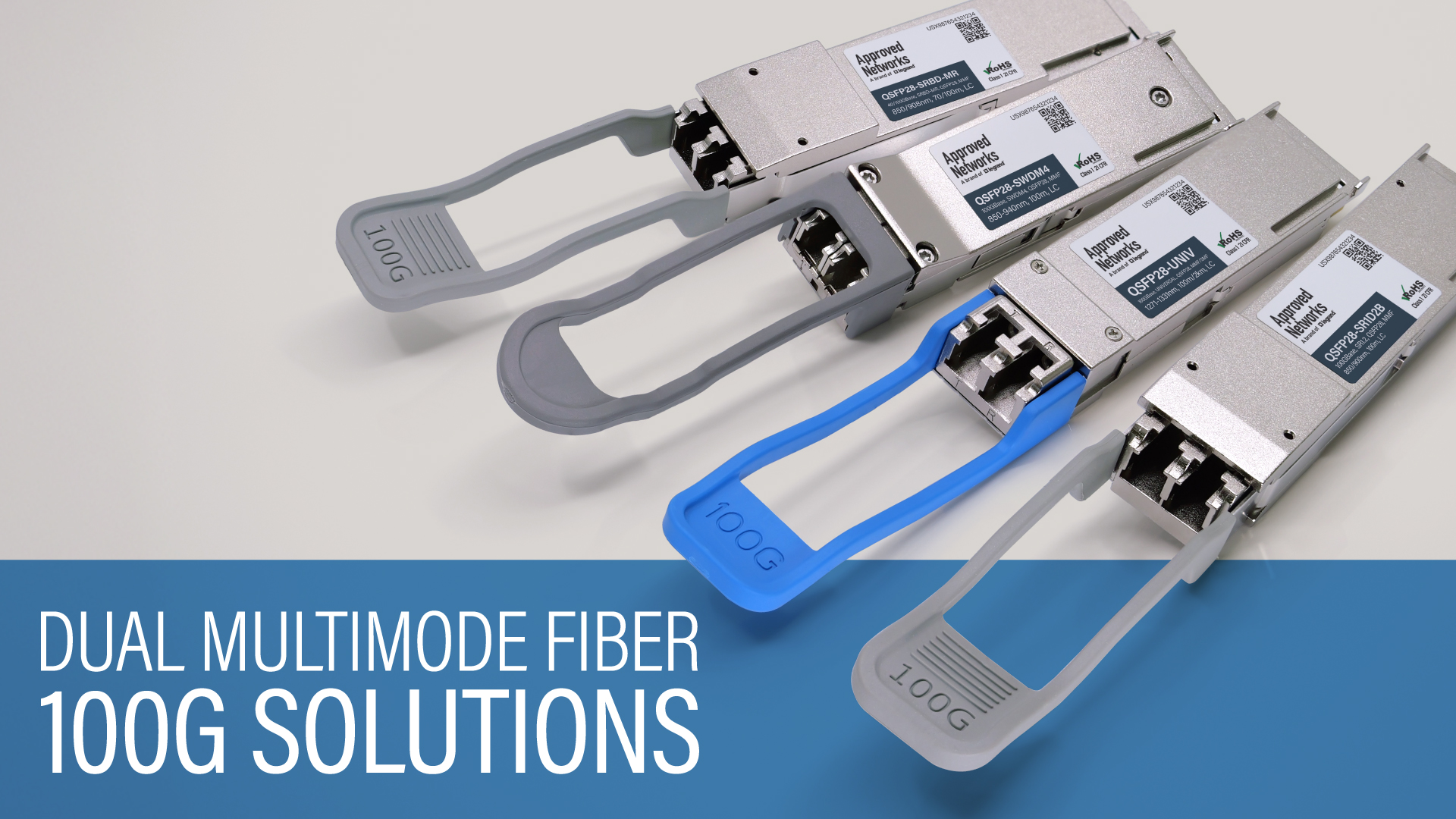How to Efficiently Implement a 100G Network Using Only Two-Strand Multimode Fiber Cables
Posted by Frank Yang on Oct 1, 2024

Imagine a scenario where you have existing 10G and 25G networks running on multimode fiber (MMF) and you plan to upgrade to 100G. This may immediately raise concerns about the need to install extra fiber cables, as the IEEE Std 802.3bm specifies that 100GBase SR4 optics for 100G over MMF require four pairs of fibers, compared to the one pair used for 10G. Approved Networks offers four solutions that eliminate the need for additional fiber cabling installations and still allow you to achieve 100G over MMF.

The following diagrams illustrate how the optics of the four solutions work at a high level. The aqua color of the lines in the diagrams representsMMF while the brown colors represent single-mode fiber (SMF). Good practice is to deploy individual solutions by a pair of corresponding optical transceivers as illustrated in each diagram.
- The 40/100G short-reach bi-directional (SRBD)transceiver is a dual-rate optic that can operate at 40G and 100G. It offers a variety of operational options. It supports a reach of 100m on optical mode 3 (OM3) and 150m on OM4 MMF, providing efficient connectivity at 40Gb/s speeds. In 100G mode, the transceiver can transmit data up to 70m over OM3 or 100mover OM4. With this dual-rate capability, the transceiver allows for smooth transition and re-use of existing infrastructure when upgrading from 10G to either 40G or 100G Ethernet connectivity, or from 40G to 100G. This solution does not interfere with other solutions and can be deployed by a pair of corresponding optical transceivers.

- The 100G short-reach (SR) 1.2bi-directional (BiDi) transceiver enables the transmission of 100G data over MMF, providing a superior solution for upgrading from 10G to 100G. It utilizes standard compliant technology, ensuring compatibility and reliability. Additionally, it offers the capability to create a 4x100G breakout network with 400G SR4.2 BiDi technology. This seamless migration from 10G to 100G over MMF infrastructure allows for efficient and cost-effective network expansions. This solution can be deployed with a pair of corresponding optical transceivers and does not interfere with other solutions.


- The 100G Short Wavelength Division Multiplex (SWDM4) transceiver utilizes wavelength division multiplexing to enable a 100G transmission rate over multimode fiber. This technology offers an investment preservation advantage, allowing for a seamless upgrade from 10G to 100G over existing MMF infrastructure. This solution can be deployed by a pair of corresponding optical transceivers and does not interfere with other solutions.


- The 100G Universal transceiver functions over OM4 MMFfor up to 100morsingle-mode fiber (SMF) for up to 2 kilometers. This allows customers the flexibility to use just two fiber strands instead of the typical eight strandsrequired by the 100G SR4solution. You can use the 100G Universal transceiver for both MMF and SMF infrastructure, reducing the need for multiple components and streamlining your inventory.This solution provides flexibility for customers to use 2 fiber strands instead of 8, as required by the 100G SR4 solution.

All four solutions offered by Approved Networks allow for upgrading to 100G over dual MMF without additional fiber installations. This is a more cost-effective and efficient approach for network upgrades.At Approved Networks you are never alone in creating the ideal solution. Our experienced team will deliver comprehensive support from concept through deployment for every stage of your project.For more information on our 100G dual MMF solutions, contact an Approved Networks representative.
